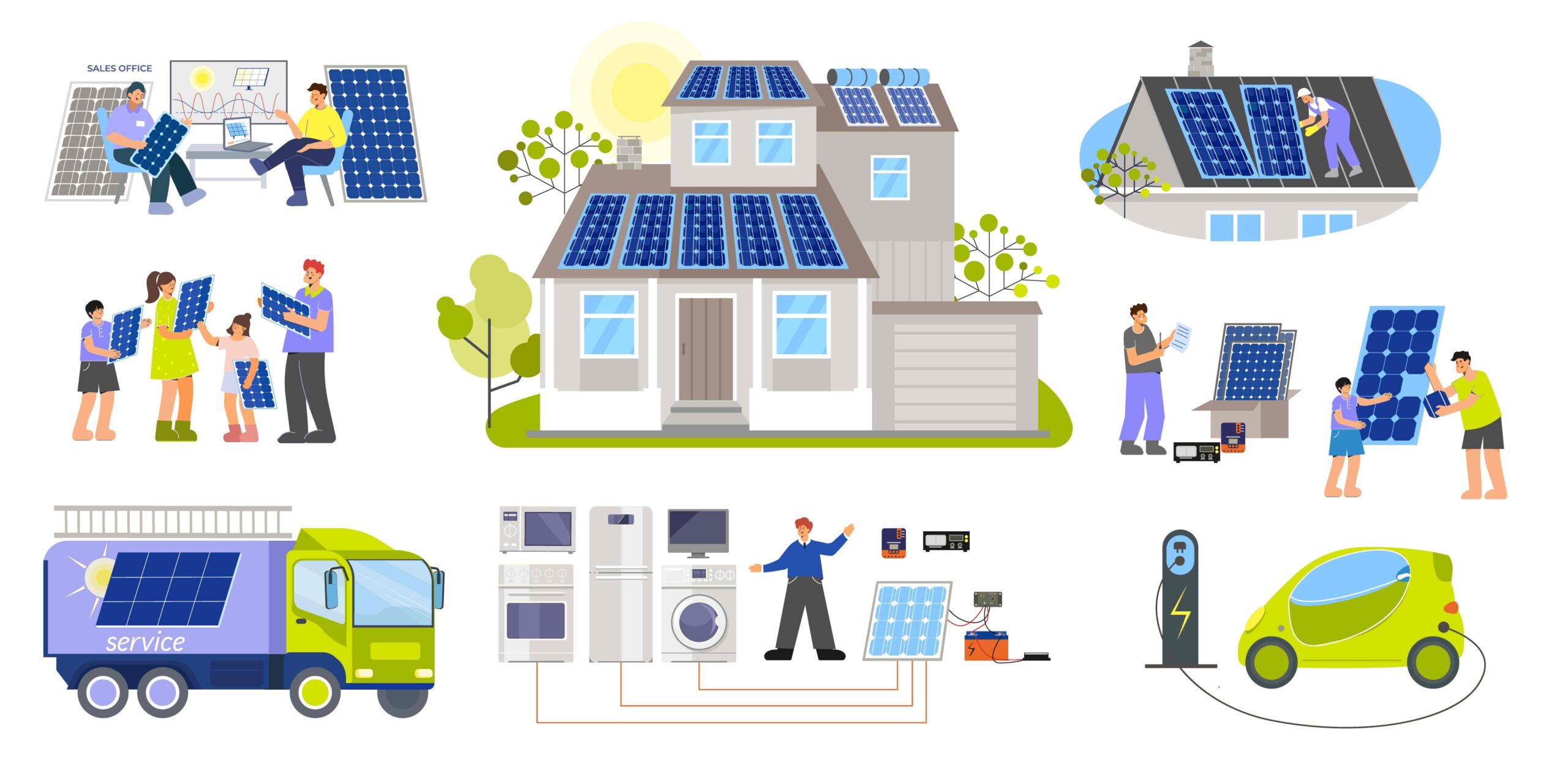
Introduction: Understanding Solar PV Panels
Whether you’re planning a rooftop solar installation or just exploring clean energy options, knowing the solar PV panels types available in India can help you make an informed decision.
Solar photovoltaic (PV) panels are the key component of any solar power system. But not all panels are the same. From monocrystalline to polycrystalline, thin-film, and advanced technologies like PERC, each type offers different advantages based on budget, efficiency, and space.
1. Monocrystalline Solar Panels
What They Are:
These panels, made from a single pure silicon crystal, are easily identifiable by their black hue and uniform look.
Pros of Solar PV Panels Types:
- High efficiency (18–22%)
- Long lifespan (25+ years)
- Performs well in low-light and high-heat conditions
- Requires less space for the same output
Cons:
- Higher cost
- More silicon waste during production
Best For:
Those seeking maximum power output or homeowners with limited roof space are the ideal candidates.
2. Polycrystalline Solar Panels
What They Are:
Constructed from melted silicon fragments, these panels have a bluish tint due to their grainy structure.
Pros:
- More affordable than monocrystalline
- Less manufacturing waste
- Decent efficiency (15–17%)
Cons:
- Slightly lower efficiency
- Require more space
Best For:
This option is ideal for buyers who are budget-conscious and have ample rooftop space.
3. Thin-Film Solar Panels
What They Are:
Photovoltaic material is layered on a substrate such as glass, metal, or plastic. Common materials include CdTe, CIGS, and a-Si.
Pros:
- Lightweight and flexible
- Lower manufacturing cost
- Good performance in diffused sunlight
Cons:
- Lowest efficiency (10–13%)
- Shorter lifespan
- Requires more surface area
Best For:
You can use it for commercial setups, BIPV (Building Integrated Photovoltaics), or temporary installations.
4. PERC Technology (Passivated Emitter and Rear Cell)
What It Is:
The rear side of the panel incorporates an additional layer that reflects unabsorbed light, providing an additional opportunity for conversion.
Benefits:
- Boosts panel efficiency by 1–2%
- Works well in high-heat and low-light conditions
- Available in both mono and poly versions
Best For:
This product is ideal for individuals seeking to optimize their return on investment through improved productivity.
Side-by-Side Comparison
| Panel Type | Efficiency | Cost | Lifespan | Roof Space Need | Flexibility |
|---|---|---|---|---|---|
| Monocrystalline | High | High | 25+ yrs | Low | Rigid |
| Polycrystalline | Medium | Medium | 25+ yrs | Medium | Rigid |
| Thin-Film | Low | Low | 10–15 yrs | High | Flexible |
| PERC (add-on) | Higher | Slightly Higher | 25+ yrs | Same as base type | Same as base type |
How to Choose the Right Panel?
For small roofs, it is recommended to choose monocrystalline or PERC mono panels.
For Large Areas: Polycrystalline is budget-friendly and sufficient.
For Portable or Unique Surfaces: Thin-film panels offer flexibility.
Think about bifacial mono panels or PERC for high returns.
Related Reading & Internal Links
FAQs
Q1. What Solar PV Panels Types is best for home use?
For residential rooftops, monocrystalline or PERC panels are preferred due to their high efficiency and compact footprint.
Q2. Are there subsidies available for different panel types?
Yes. The subsidy is based on system capacity and compliance with MNRE guidelines, not the panel type. Panels must be ALMM-approved.
Q3. Can I use thin-film panels on a curved surface?
Yes! That’s one of their strengths. They’re ideal for irregular or curved surfaces.
Q4. What is bifacial panel technology?
It allows the panel to capture sunlight from both sides, increasing output—common in utility-scale or ground-mounted projects.
Q5. Are PERC panels pricier?
They’re slightly costlier than standard mono or poly panels but offer better performance, especially in Indian climate conditions.
Final Thoughts About Solar PV Panels Types
Choosing the right solar PV panel types isn’t just about price—it’s about finding the perfect balance between cost, efficiency, durability, and available space. Whether you’re building a small off-grid setup or a full rooftop installation for your home, knowing your options puts you in control.
Ready to go solar? Start with the panel that matches your roof, your needs, and your budget—then let the sun do the rest.
